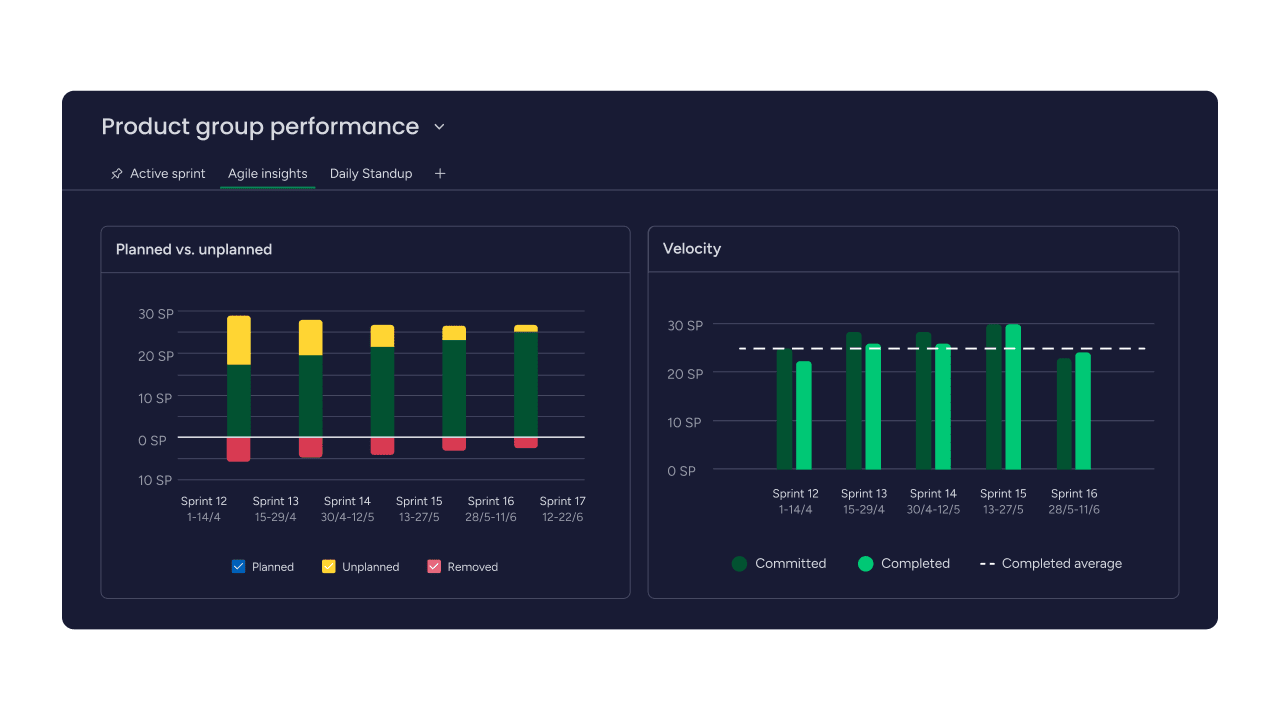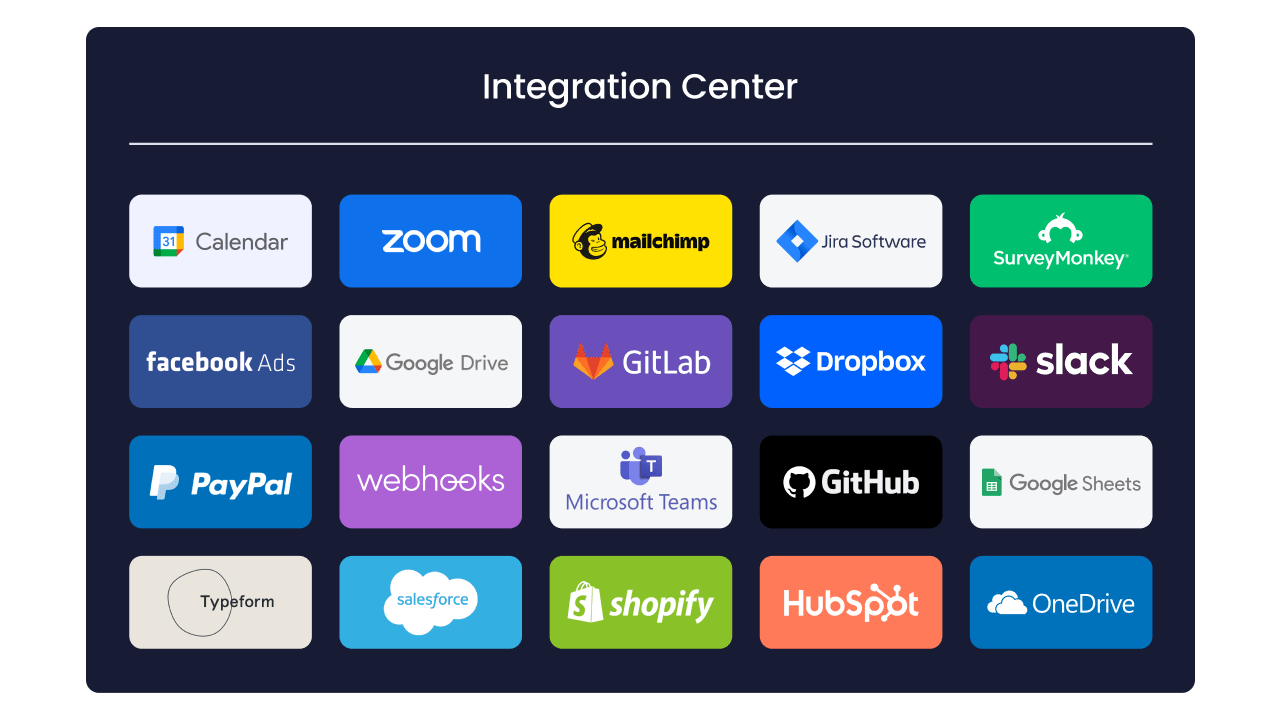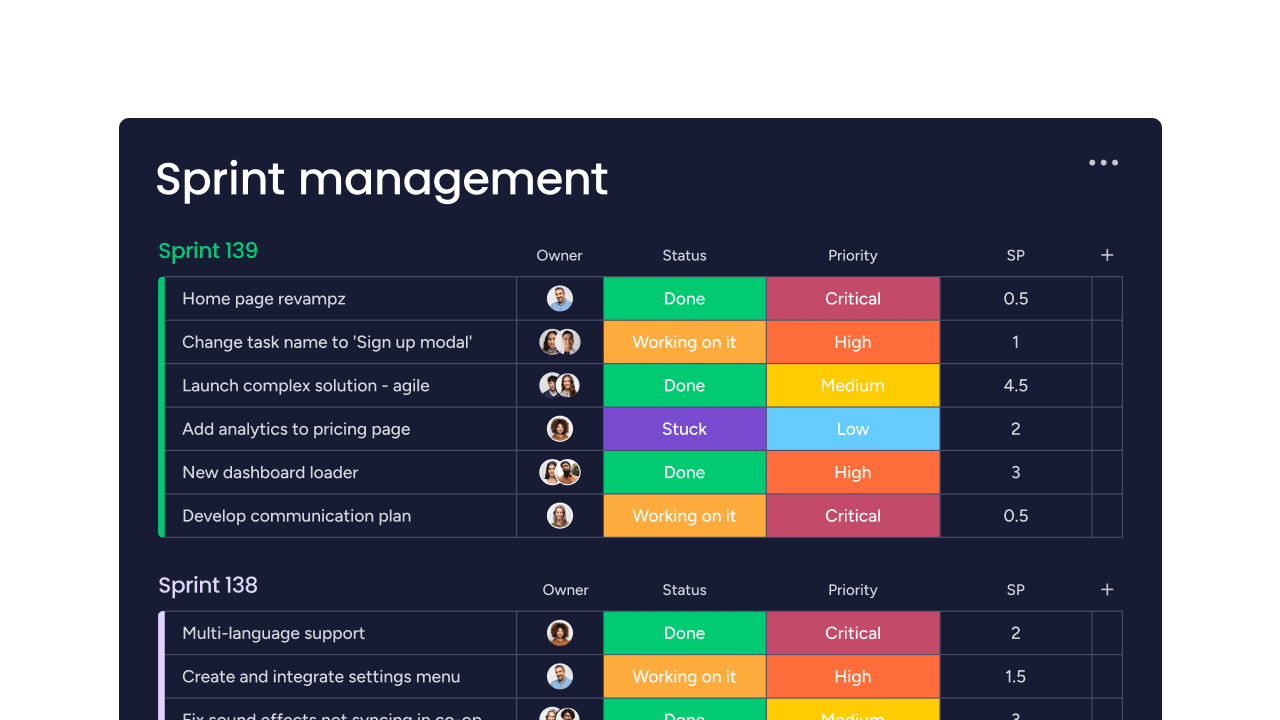When a single Agile team ships code, the process is a well-oiled machine. But what happens when that process is multiplied by twenty? The speed that once defined success can quickly become a source of chaos as dependencies are missed, communication breaks down, and different teams accidentally work against each other, slowing everyone down.
This is the exact challenge the Scaled Agile Framework (SAFe) was designed to solve. It provides just enough structure to align dozens or even hundreds of people toward common goals. SAFe helps large organizations maintain the speed and flexibility of Agile development while ensuring everyone is pulling in the same direction.
This easy-to-follow article breaks down how SAFe works in practice. It will explore its core principles, the different organizational levels, and the key benefits like faster delivery and improved quality. Readers will also learn the steps for a successful implementation and how the right platform can provide the visibility and flexibility needed to make it all work.
Key takeaways
- Structure and coordination: SAFe helps large organizations coordinate multiple Agile teams through structured planning sessions and clear alignment between business strategy and development work.
- Gradual implementation: start the SAFe journey by assessing the current Agile maturity, then launch one pilot Agile Release Train before gradually expanding to other teams.
- Challenge resolution: the biggest scaling challenges—coordinating teams, maintaining speed, and aligning development with business goals—are all solvable with the right prescriptive approach.
- Flexible platform support: platforms like monday dev provide flexible PI planning boards and real-time dashboards that support different team workflows while maintaining program-level visibility across your SAFe implementation.
- Configuration matching: choose the SAFe configuration based on organization size: Essential SAFe for 50–125 people, Portfolio SAFe for strategic alignment, or Full SAFe for 500+ people.
What is scaled Agile framework?
Scaled Agile Framework (SAFe) is a structured approach that helps large organizations coordinate multiple Agile teams working together. It provides specific roles, ceremonies, and practices that allow hundreds or even thousands of people to collaborate effectively while maintaining the speed and flexibility of Agile development.
The Scaled Agile Framework (SAFe) serves as the architectural framework for enterprise-level Agile.
While a standard Agile development process works effectively for single teams of five to ten people, it lacks sufficient structure when 50, 100, or 500 people need to collaborate toward the same goals. SAFe fills this gap by adding necessary layers of coordination while preserving team autonomy.

10 core principles of SAFe Agile methodology
The foundation of SAFe rests on ten Agile principles that guide every decision and action. These aren’t just theoretical concepts — they’re practical guidelines that shape how teams work together and deliver value.
1. Take an economic view
Every decision should consider its financial impact. This means weighing the cost of delay against the expense of rushing features to market.
2. Apply systems thinking
You need to see how all parts connect. When one team optimizes their work without considering others, it often creates problems elsewhere.
3. Assume variability and preserve options
Keep multiple solutions open as long as possible. The best answer often emerges later when you have more information.
4. Build incrementally with fast learning cycles
Deliver small pieces frequently. Each release teaches you something new about what customers actually need.
5. Base milestones on objective evaluation
Measure progress through working software, not completed documents. Demo days matter more than status reports.
6. Make value flow without interruptions
Find and fix the bottlenecks. Value should move smoothly from idea to customer without getting stuck.
7. Apply cadence and synchronize with cross-domain planning
Regular rhythms create predictability. When everyone plans together, dependencies become visible and manageable.
8. Unlock the intrinsic motivation of knowledge workers
Give teams purpose, autonomy, and opportunities to master their craft. Motivated people deliver exceptional results.
9. Decentralize decision-making
Push decisions down to the people doing the work. They have the most context and can act fastest.
10. Organize around value
Structure teams around what customers need, not functional departments. This reduces handoffs and speeds delivery.
How SAFe scaled Agile works in practice
SAFe organizes work across three levels, each serving a specific purpose in connecting strategy to execution. Understanding these levels helps you see how individual team efforts contribute to larger business goals.
Team level Agile execution
Individual Agile teams form SAFe’s foundation. These teams of five to eleven people use Agile software development methods like Scrum or Kanban to deliver working software every two weeks. They maintain their own backlogs, run their own Agile ceremonies, and own their technical decisions.
What makes SAFe different? These teams align their work with larger program objectives. They participate in joint Agile planning sessions and coordinate with other teams building related features.
Program level coordination
Multiple teams working on the same product form an Agile Release Train (ART). An ART typically includes 50-125 people organized around delivering customer value.
The magic happens during Program Increment (PI) Planning — a two-day event where all teams plan together for the next 8-12 weeks. Everyone leaves knowing exactly what they’re building and how their work connects with other teams.
Portfolio level strategic alignment
The portfolio level connects development work to business strategy. Portfolio managers allocate budgets to different value streams based on strategic priorities, an approach to Agile budgeting that ensures teams work on the right things.
This level focuses on investment decisions and measuring business outcomes rather than tracking individual features.
5 key benefits of implementing SAFe framework
Implementing SAFe isn’t just about adding structure: it’s about unlocking meaningful, measurable improvements across the entire organization. When teams plan together, align on priorities, and work toward shared objectives, the business sees results quickly.
Here are the key benefits companies experience when SAFe is done well.
1. Faster time to market
SAFe reduces delays by improving coordination. When teams plan together, they identify dependencies early and resolve them before they become blockers. Regular integration points mean problems surface quickly when they’re still small and fixable. According to McKinsey’s 2024 IT productivity study, high-performing organizations complete medium-size changes in two to four months versus up to a year for less-advanced peers.
Improved quality and productivity
Built-in quality practices catch defects early. Teams using SAFe report fewer production issues because they integrate and test continuously throughout development. McKinsey’s 2024 research shows cross-functional teams with automated CI/CD increased delivery predictability from 60% to 95% within three months.
Enhanced employee engagement
Clear goals and regular wins boost morale. Teams understand how their work contributes to business success, which creates meaning beyond just writing code.
Stronger business-IT alignment
SAFe creates regular touchpoints between business stakeholders and development teams. This ongoing dialogue ensures technical work supports business priorities.
Reduced project risk
Frequent deliveries and demos provide early warning signs, a core practice of Agile project management. You discover problems while there’s still time to adjust rather than at the end of a long project.

7 core competencies every SAFe organization needs
To operate effectively at scale, organizations need more than processes — they need a set of competencies that support alignment, fast feedback, and continuous improvement. SAFe outlines seven essential capabilities that drive enterprise agility.
Here’s what each one means in practice:
1. Enterprise solution delivery
Large solutions require multiple teams working in concert. This competency involves managing technical dependencies and ensuring all pieces integrate smoothly.
2. Agile product delivery
Teams must balance customer needs with technical excellence, a hallmark of Agile product management. This means incorporating user feedback while maintaining sustainable development practices.
3. Team and technical agility
Strong engineering practices form the foundation. Teams need automated testing, continuous integration, and the ability to refactor code safely.
4. Lean portfolio management
Investment decisions should maximize value delivery. This requires balancing competing priorities and funding the most important work first.
5. Organizational agility
The entire organization must adapt quickly to change. This means flexible structures and rapid decision-making at all levels.
6. Continuous learning culture
Teams that stop learning fall behind. Organizations need systematic approaches to sharing knowledge and improving Agile best practices.
7. Lean-Agile leadership
Leaders coach rather than command. They create environments where teams can succeed rather than dictating how work gets done.
4 SAFe configurations for every organization size
Choosing the correct SAFe configuration is critical, as it determines the level of structure and coordination your enterprise requires. The configurations below are designed to fit the specific scale and complexity of your development needs, from small Agile Release Trains (ARTs) to vast enterprise environments.
| Configuration | Team size | Key components | Best for |
|---|---|---|---|
| Essential SAFe | 50-125 people | Single ART, PI planning | Organizations new to scaling |
| Large Solution SAFe | Multiple ARTs | Solution Train coordination | Complex product development |
| Portfolio SAFe | Multiple programs | Strategic alignment, Lean budgeting | Connecting strategy to execution |
| Full SAFe | 500+ people | All framework elements | Large enterprises |
Essential SAFe
This configuration includes the minimum elements needed to coordinate multiple teams. You get one Agile Release Train, Program Increment Planning, and basic coordination mechanisms. Perfect for organizations taking their first steps in scaling Agile.
Large solution SAFe
When your product requires multiple ARTs working together, you need Large Solution SAFe. This adds solution-level roles and ceremonies to coordinate across trains.
Portfolio SAFe
Portfolio SAFe connects execution to strategy through Lean Portfolio Management. Use this when you need to align multiple programs with business objectives and make investment trade-offs.
Full SAFe
The complete framework for complex enterprises. Full SAFe includes every element and is designed for organizations that need comprehensive coordination across multiple business units.
SAFe vs other Agile scaling frameworks
How do you choose between different scaling frameworks? Each approach has strengths and trade-offs. Understanding these differences helps you pick the right fit for your organization.
SAFe vs Scrum@Scale
Scrum at scale extends familiar Scrum practices through a network of Scrum teams. It’s simpler than SAFe but provides less guidance for portfolio management and business alignment. Choose Scrum@Scale if you have strong Scrum experience and want minimal additional structure.
SAFe vs Large-Scale Scrum (LeSS)
LeSS emphasizes simplicity with minimal roles and ceremonies. It works well for organizations with strong engineering cultures that prefer figuring things out themselves. If you’re comparing SAFe vs Scrum, SAFe provides more prescriptive guidance for organizations that want clearer direction.
SAFe vs Disciplined Agile Delivery
Disciplined Agile offers a toolkit approach — you choose practices that fit your context. This flexibility requires more decision-making but allows greater customization. SAFe’s structured approach gets you started faster but may feel constraining if you need unique solutions.
SAFe vs Spotify model
The Spotify model emphasizes culture and autonomous teams over process. It works in high-trust environments with mature engineering practices. SAFe provides more structure, which helps in regulated industries or organizations needing stronger governance.
How to overcome common challenges when scaling Agile
Every organization faces obstacles when scaling Agile practices. Knowing these challenges in advance helps you prepare solutions before problems derail your Agile transformation.
Challenge 1: coordinating multiple Agile teams
When teams work in isolation, they create conflicting solutions and miss critical dependencies. The complexity multiplies as you add more teams to the mix.
- Why this happens: teams lack visibility into each other’s work. They optimize locally without considering system-wide impacts.
- Solution: implement regular cross-team planning and demos. Create shared communication channels and architectural guidelines. Platforms like monday dev provide visibility across teams without adding bureaucracy.
Challenge 2: maintaining speed at enterprise scale
Adding more teams often slows everyone down. The coordination overhead can eliminate the speed benefits that made Agile attractive initially.
- Why this happens: traditional scaling adds approval layers and process overhead. Technical debt accumulates and architectural issues compound.
- Solution: invest in automation and platforms that reduce manual coordination. Maintain team autonomy within clear boundaries. Focus relentlessly on eliminating waste in your processes.
Challenge 3: aligning development with business strategy
Technical teams build features that don’t support business goals. This misalignment wastes resources and misses market opportunities.
- Why this happens: business strategy doesn’t translate clearly to technical work. Feedback loops between business and development are too slow.
- Solution: create clear value streams connecting business outcomes to technical work. Implement regular business reviews and ensure technical teams understand the “why” behind their work.

SAFe certifications that advance your career
SAFe certifications validate your knowledge and open doors to new opportunities. But which certification should you pursue? Your choice depends on your current role and career goals.
Most in-demand SAFe certifications
- SAFe Agilist (SA): opens doors to leadership roles like Release Train Engineer or Agile Coach.
- SAFe Practitioner (SP): prepares you to work effectively within Agile Release Trains.
- SAFe Program Consultant (SPC): positions you to lead transformations and train others.
Choosing your SAFe career path
Your certification path should match your career trajectory. Individual contributors typically start with SAFe Practitioner to understand team-level practices. Managers and leaders begin with SAFe Agilist to grasp the leadership aspects. Consultants focus on SPC certification to guide organizational transformations.
Consider your experience level and where you want to be in two to three years. Each certification builds on previous knowledge, so plan your learning journey accordingly.
How to implement scaled Agile framework successfully
Rolling out SAFe can feel overwhelming, but it becomes far more manageable when you follow a clear sequence. Start small, learn quickly, and scale what works.
These handy steps outline a practical path to adopting SAFe in a way that supports both your teams and your long-term goals.
Step 1: assess your Agile maturity
Start by understanding where you are today. Evaluate your current Agile practices, team capabilities, and organizational culture. This honest assessment reveals what you need to work on before scaling.
Interview teams about their challenges. Document what works well and what doesn’t. Identify potential champions and resistance points. This baseline helps you plan a realistic transformation timeline.
Step 2: train SAFe leaders and champions
Leaders set the tone for transformation. They need to understand SAFe principles deeply enough to make decisions that support Agile teams. Focus on changing mindsets, not just teaching processes.
Provide immersive training that connects SAFe principles to daily leadership decisions. Leaders should practice new behaviors in safe environments before applying them with their teams.
Step 3: launch your first Agile Release Train
Choose your pilot ART carefully. Select teams that are ready for change and work on strategically important products. Provide strong coaching support during the first few Program Increments.
Run your first PI Planning event with experienced facilitators. Expect imperfection; the goal is learning, not flawless execution. Capture lessons and adjust your approach for the next increment.
Step 4: expand to portfolio level
After proving success at the program level, add portfolio capabilities. This connects team execution to business strategy through Lean Portfolio Management practices.
Define value streams that align with how you deliver customer value. Establish lightweight governance that enables fast decisions without creating bureaucracy. Ensure portfolio decisions flow smoothly to team-level work.
Step 5: continuously inspect and adapt
SAFe implementation never really ends. Regular retrospectives at all levels identify what needs improvement. Act on feedback quickly to maintain momentum and trust.
Measure outcomes that matter: delivery speed, quality, and business value. Adjust practices based on what you learn. Remember that SAFe is a framework for continuous improvement, not a rigid prescription.
Modern platforms for scaled Agile success
Technology platforms make or break scaled Agile implementations. The right platform reduces coordination overhead while improving visibility and collaboration across teams.
Modern platforms must support three critical capabilities:
- Visibility without bureaucracy: stakeholders need real-time insights without creating reporting burdens for teams.
- Flexible coordination: teams coordinate work without losing autonomy or agility.
- Integrated workflows: development practices integrate seamlessly with planning and tracking.
Modern platforms like monday dev support scaled Agile. Their flexible architecture adapts to different SAFe configurations while maintaining simplicity for individual teams, helping you orchestrate an Agile workflow. Custom workflows match your specific practices rather than forcing you into rigid templates.
Try monday dev
Transform your scaled Agile journey with monday dev
Platforms like monday dev bring unique advantages to SAFe implementations. Built on the monday Work OS, the platform provides the flexibility growing organizations need as they scale their Agile practices.
The platform excels at supporting different team preferences while maintaining program-level visibility. Your Scrum teams can use sprint boards while Kanban teams use flow-based views: all contributing to the same program objectives.
Key capabilities that support your SAFe journey include:
- Customizable PI Planning boards: create dedicated boards for your 8-12 week Program Increments with custom columns that track feature status, dependencies, and team assignments. Use the timeline view to visualize work across all teams in your Agile Release Train, and leverage color-coding to identify cross-team dependencies at a glance.
- Real-time program dashboards: build executive dashboards that automatically aggregate data from multiple team boards using monday dev’s native widgets. Track velocity, burndown, and feature completion across your entire ART without asking teams for status updates. Set up automated alerts when dependencies are at risk or when teams need support.
- Flexible team workflows: each team customizes their board structure, automation rules, and views while feeding into shared program objectives. Teams can choose between sprint planning templates, Kanban boards, or hybrid approaches. Use board permissions to maintain team autonomy while ensuring program-level visibility for Release Train Engineers.
- Seamless integrations: connect monday dev directly with GitHub, GitLab, Jira, and Azure DevOps through pre-built integrations. Sync code commits, pull requests, and build status automatically to your planning boards. Use the API to create custom integrations with your CI/CD pipeline, ensuring technical work stays aligned with PI objectives.
Ready to accelerate your scaled Agile transformation? Try monday dev and discover how the right platform makes scaling Agile feel natural rather than forced.
Frequently asked questions
What does SAFe stand for in Agile methodology?
In Agile methodology, SAFe stands for Scaled Agile Framework, which is a structured approach for implementing Agile practices across large organizations with multiple teams.
How long does SAFe implementation typically take?
A typical SAFe implementation takes 12-18 months for a full organizational transformation, though you'll see initial benefits within the first two to three program increments.
Is scaled Agile framework the same as traditional Agile?
Scaled Agile framework builds on traditional Agile by adding coordination layers for multiple teams, while traditional Agile focuses on single-team practices.
What is the difference between scaled Agile framework and Scrum?
Scaled Agile framework uses Scrum at the team level but adds program and portfolio layers to coordinate multiple Scrum teams working together.
Which SAFe certification should beginners start with?
Beginners should start with SAFe Agilist (SA) certification if in leadership roles, or SAFe Practitioner (SP) if working as individual contributors.
Can small companies benefit from scaled Agile framework?
Small companies under 50 people typically find traditional Agile methods like Scrum or Kanban more appropriate than SAFe's additional complexity.
 Get started
Get started 

